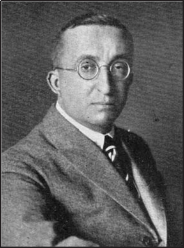- HEINKEL
- GERMANY (see also List of Individuals)\
 24.1.1888 Grunbach/D - 30.1.1958 Stuttgart/D\Ernst Heinkel started his studies in 1906 at Stuttgart Technical University. In 1910 he presented his first airplane design which he tested in 1911. Ten days later he crashed from 40 m height and was heavily injured. His dream of flying seemed to be at the end, yet he developed into one of the most famous aviation engineers. In 1913 he joined Albatros aviation works at Johannisthal and brought various monoplanes and biplanes to success. From 1914 he was an associate of Castiglioni aviation works and moved to Vienna and Budapest. Heinkel founded his own works in 1922 in Warnemünde, where the He3 was launched in 1923. Although Germany was forbidden to build airplanes by the Versailles treaty of 1919, the USA and Japan accepted Heinkel's action and were his main customers. By 1939, Heinkel had designed and built the world's fastest airplane He100, which broke the world speed record with 464 mph by more than 30 miles per hour. Once the German Luftwaffe had decided to take over the Warnemünde site, Heinkel moved to Rostock and Berlin. During World War II, up to 50,000 collaborators were counted. Up to 1945, some 500 airplane types had been developed and over 10,000 machines had been built. Heinkel was awarded honorary doctorates and he was appointed honorary professor in 1938.\Heinkel was a gifted airplane designer who pioneered many of the technologies now common in aircraft design. His He176 was the world's first rocket-powered aircraft and his He178 the first jet aircraft. He had little regard for the moral consequences of his actions, however, because he supported World War II with the best aircraft, including the famous He111 light bomber. After the war he was tried as a war criminal by the Nuremberg tribunal. In the 1950s he manufactured bicycles and midget automobiles.\Anonymous (1924). Der erfolgreichste Konstrukteur Ing. Ernst Heinkel. Illustrierte Flugwoche6: 342. PAnonymous (1933). Der bekannte Flieger Dr.-Ing. E.h. Heinkel. Illustrierte Flugwoche 11(2):XIV. PAnonymous (1968). Zum 10. Todestag von Prof. Dr. Ernst Heinkel. Flugwelt 20(4): 207. PBecker, C. (1968). The Luftwaffe war diaries. Garden City: New York. Heinkel, E. (1956). Stormy life. Dutton: New York.Ranier, J. (1995). Ernst Heinkel. Notable twentieth-century scientists 2: 889-890. Gale Research: New York.Regner, H. (1953). Die He178, das erste Flugzeug mit Strahltriebwerk. Flugwelt 5(11): 331. P
24.1.1888 Grunbach/D - 30.1.1958 Stuttgart/D\Ernst Heinkel started his studies in 1906 at Stuttgart Technical University. In 1910 he presented his first airplane design which he tested in 1911. Ten days later he crashed from 40 m height and was heavily injured. His dream of flying seemed to be at the end, yet he developed into one of the most famous aviation engineers. In 1913 he joined Albatros aviation works at Johannisthal and brought various monoplanes and biplanes to success. From 1914 he was an associate of Castiglioni aviation works and moved to Vienna and Budapest. Heinkel founded his own works in 1922 in Warnemünde, where the He3 was launched in 1923. Although Germany was forbidden to build airplanes by the Versailles treaty of 1919, the USA and Japan accepted Heinkel's action and were his main customers. By 1939, Heinkel had designed and built the world's fastest airplane He100, which broke the world speed record with 464 mph by more than 30 miles per hour. Once the German Luftwaffe had decided to take over the Warnemünde site, Heinkel moved to Rostock and Berlin. During World War II, up to 50,000 collaborators were counted. Up to 1945, some 500 airplane types had been developed and over 10,000 machines had been built. Heinkel was awarded honorary doctorates and he was appointed honorary professor in 1938.\Heinkel was a gifted airplane designer who pioneered many of the technologies now common in aircraft design. His He176 was the world's first rocket-powered aircraft and his He178 the first jet aircraft. He had little regard for the moral consequences of his actions, however, because he supported World War II with the best aircraft, including the famous He111 light bomber. After the war he was tried as a war criminal by the Nuremberg tribunal. In the 1950s he manufactured bicycles and midget automobiles.\Anonymous (1924). Der erfolgreichste Konstrukteur Ing. Ernst Heinkel. Illustrierte Flugwoche6: 342. PAnonymous (1933). Der bekannte Flieger Dr.-Ing. E.h. Heinkel. Illustrierte Flugwoche 11(2):XIV. PAnonymous (1968). Zum 10. Todestag von Prof. Dr. Ernst Heinkel. Flugwelt 20(4): 207. PBecker, C. (1968). The Luftwaffe war diaries. Garden City: New York. Heinkel, E. (1956). Stormy life. Dutton: New York.Ranier, J. (1995). Ernst Heinkel. Notable twentieth-century scientists 2: 889-890. Gale Research: New York.Regner, H. (1953). Die He178, das erste Flugzeug mit Strahltriebwerk. Flugwelt 5(11): 331. P
Hydraulicians in Europe 1800-2000 . 2013.
